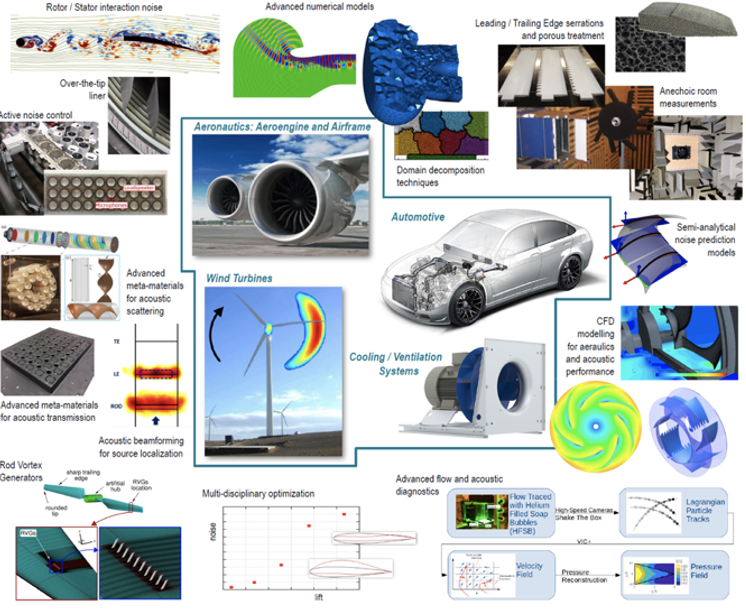Niloofar Sayyad Khodashenas
About me
Any physical quantity that exhibits variation in space or time, can be used as a signal to share messages between observers. According to the IEEE Transactions on Signal Processing, a signal can be audio, video, speech, image, sonar, and radar-related for instance. Noise is a general term for unwanted (and, in general, unknown) modifications that a signal may suffer during capture, storage, transmission, processing, or conversion.
From an aeroacoustics point of view, we need to develop three main factors to reduce noise, which is an important problem in modern society:
- Better understand the physical mechanisms responsible for altering the flow of acoustic fields. In the absence of a phenomenological understanding, modelling and optimization can hardly be successful.
- Overcome tight constraints (regarding safety, robustness, weight, maintainability, etc.) that are imposed on any novel noise mitigation strategy trying to make its way to the full-scale industrial application.
- Explore the possibilities to reduce noise offered by new materials and new manufacturing processes.
Together with my research group, at Marcus Wallenberg Laboratoriet för Ljud och Vibrationsforskning (MWL), Stockholm, KTH, I perform research focused on the experimental investigation for identifying and understanding the physics of non-linearity. Specifically, we examine properties of different perforated plates for tonal, multi-tone and random signals. Some interesting examples of this work arependulas, hearts, fireflies, paired black holes, pulsar emission, three-body problem, and other electronic, communication, chemical and biological systems. My main interest are in non-linear signal analysis and modelling of these systems.
My supervisors are Prof. Hans Bodén and Associate professor Susann Boij, and my PhD project is part of the Marie Skłodowska-Curie Early Stage Researcher Network - SmartAnswer (Smart mitigation of flow-induced acoustic radiation and transmission for reduced aircraft, surface transport, workplaces and wind energy noise, ITN ESR3).

Fig1. Visual board of applications for the SmartAnswer project.
I am originally from Iran. My background is in electrical control engineering (B.Sc & M.Sc) with a specialty in logical, linear, and non-linear control, genetic algorithms, heuristic algorithms, and decision-making processes. During my master thesis I simulated wearable rehabilitation robot dynamics according to the body movement and generation of the stability by classical PID and fuzzy controller. Also, some of my research efforts on renewable energy led to publications.
- Doktorand (PAD)